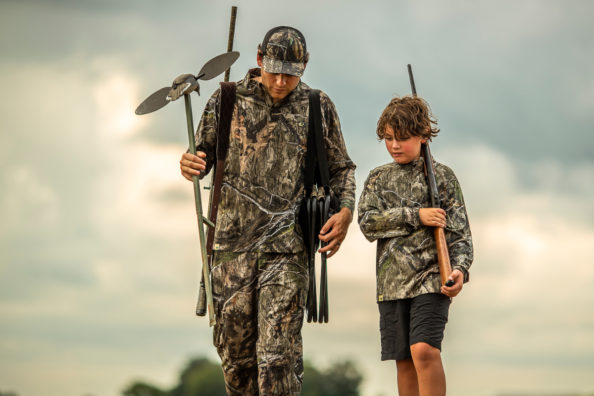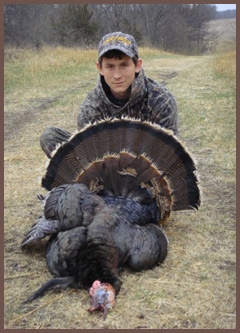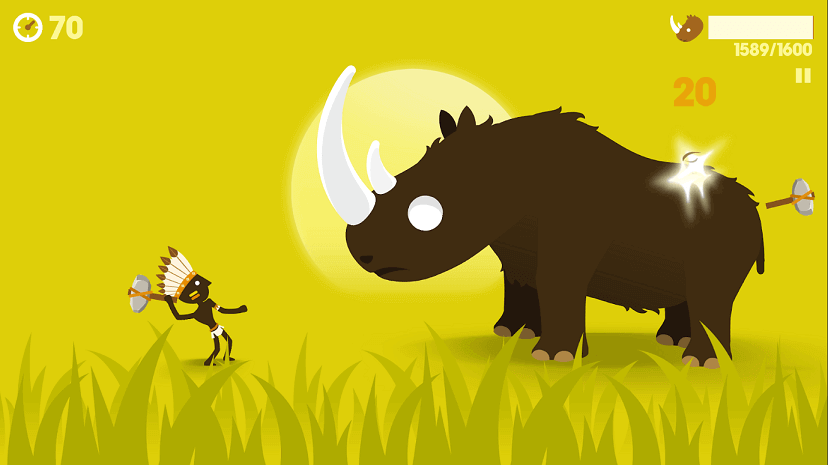
The annual Kansas hunting atlas is a good way to determine which Kansas walk-in hunting areas are available. The atlas contains detailed maps of walk in areas, access dates, state and federal land, and includes detailed mapping. On the Kansas Department of Wildlife, Parks and Tourism website, you can find an online map of Kansas’ walk-in hunting locations. This map allows hunters to quickly see the areas that are suitable for them.
Lincoln County
Kansas has many great public areas for walking in hunting for those who are interested in quail hunting. Milford Wildlife Area, which has several thousand acres of forest, is an excellent example. You have two options. There is Flint Hills National Wildlife Refuge and Council Grove Wildlife Area. A map on the state's Department of Wildlife, Parks & Tourism website allows you to view specific areas of interest. Once you have the map in hand, you can start looking for your favorite quail hunting spots.

One of the most popular Hunting Areas in the area is the B.K. Leach Memorial Conservation Area located in northeastern Lincoln County. The Natural Resources Conservation Service bought 500 acres of land from willing landowners and acquired the original tracts in 1985. 2,900 additional acres were purchased with a North American Wetland Conservation Act grant. To this day, the area is home to some of the state's largest buck hunting spots.
Kansas's successful walk-in hunting access program provides private hunting access for the public. The WIHA program is one of the most popular hunting access programs in America. It was established in 1995. Over a million acres had been enrolled in the program by 2004. Hunting deer, waterfowl and squirrel hunting is possible in some areas. WIHA provides landowners with a modest payment to allow hunters to hunt on their land. Payments vary according to the amount of land and the length of the contract.
Ozark National Forest
You might be interested in turkey hunting and wondering if you can walk in Kansas on private land. You can now. The Ozark National Forest is located in southeast Kansas and covers 678,878 acres. It is open to walk-in hunters. The land is a mix of hardwood and shrub forests with some clover/wheat open areas. Hunting is allowed in 10 designated walk-in areas, each with its own rules.

Some hunters prefer to drive to these areas and stay the night. A lot of walk-ins are located on U.S. Forest Service lands. So, the more time you spend, the higher your chances of harvesting birds. While most Missouri walk-in areas are equipped with primitive camping areas, the Bell Mountain area is an excellent choice for backpacking hunters. It is also the perfect destination for a family vacation or a romantic getaway.
FAQ
What are the benefits to hunting?
Hunting is an ancient tradition practiced by many cultures around the world. It was used for food, clothing, shelter, tools, medicine, and other purposes. Even though people hunt for sport today, they also do so for food and recreation. The meat from hunted animals is often eaten immediately after killing, while the skin, fur, feathers, bones, antlers, horns, teeth, hooves, and other parts may be sold as trophies.
Hunting isn't just a way of eating; it's a lifestyle.
Because they hunt together, hunters have strong family bonds and close friendships. They share stories and fond memories around campfires and at meals.
Hunters enjoy nature and wildlife, which helps them appreciate life on Earth.
When they take care of wild animals, they learn respect and responsibility.
Conservation helps hunters be better citizens. They work to protect habitats, species, and the environment. They understand how much land and water we need to survive.
Hunters form part of a wider community. Their families rely on them. They support one another. They support local businesses.
Hunters are also able to give back to the community. Many donate money to organizations that help children, elderly people, veterans, and other groups.
Hunters can also volunteer their time to help those in need. They could volunteer with the Red Cross, Humane Society or Humane Society.
How much does it take to become a hunter
The costs associated with hunting vary depending on the area you live in.
You may not need to pay much to gain access to public lands in some areas.
Some states require licenses and permits before you can hunt.
The price of hunting varies based on the type of firearm you use. A rifle usually costs more than a shotgun.
A license can cost anywhere from $10 to $50. You might need to buy additional tags depending upon how many hunt days you want.
Hunting certain species requires a permit. The size and type of animal you are hunting will impact the cost of your purchase.
Hunting wild turkeys requires a tag that costs up to $150.
Which state has the most deer hunters?
Wyoming is home of the most deer hunters. It also sells most hunting licenses annually.
The state with the second-most deer hunters is South Dakota. It ranks third for the number of hunting licenses sold each year.
New Hampshire is home to the most deer hunters. It ranks last in terms of the number per capita of hunting licences sold.
Is it possible to buy a gun online? What gun do I need?
A gun is required by law to hunt certain species.
Most states require hunters possess a firearm. The type you choose depends on the game you are hunting and the state where you live.
At any sporting goods retailer, you can purchase a rifle or shotgun, handguns, muzzle loader and crossbow as well as an archery weapon.
Make sure you choose a weapon that meets your needs. If you plan to hunt small game, such as squirrels or rabbits, you might consider buying a pistol of.22 caliber.
A larger caliber weapon is recommended for hunting large game, such as bears, deer, and elk.
Do not buy a weapon unless you feel comfortable handling it. Guns can be very dangerous. It is a dangerous tool.
Make sure the gun has been checked by a qualified gunsmith before you buy it. Ask the seller to show you how to load or unload the weapon.
Examine the manufacturer's warranty. Ask the dealer for a warranty if there is none.
Ask the dealer to provide you with a copy of their safety instructions. These documents should include information about safe storage and maintenance.
You should check the serial number. If it starts with "NIB" (or "New In Box"), the gun was made brand new.
If the serial number starts with an odd number, then the gun has been previously owned.
Contact the manufacturer if you're unsure if the gun was used. You should get more details from the manufacturer.
What kinds of guns are allowed to be used?
You have many options when hunting.
Hunters typically use rifles, shotguns, handguns, and muzzle-loading firearms.
Rifles have long range capabilities and can fire bullets. Shotguns are often loaded with pellets. Handguns fire bullets through their hands. Muzzle-loading firearms are similar to modern-day pistols.
Crossbows can be used to shoot arrows. Bowhunters also call archery weapons bowhunters.
Special training is required to hunt with a crossbow. First, learn how you can aim and shoot the weapon.
Is it legal to hunt bears Alaskan?
Yes, hunting bears is legal in Alaska. To capture bears, some hunters use traps. Other hunters use dogs to find bears.
The Alaska Board of Game regulates bear hunting. Before they can go into the woods, bear hunters must get a bear license.
Bear hunting is popular in some places like Denali National Park and Preserve. You can even take part in guided hunts that charge a lot of money to kill bears.
What is the most important thing about hunting animals?
How do we get there First, we need to know how to shoot accurately. Next, we need to learn how to hit the target. Finally, we need to learn how we can make adjustments if we fail.
It is essential to know the basics of hunting. It is impossible to improve your hunting skills if you don’t know what you’re doing. Although you might believe you have improved your shots because you are better, if you don't know how to do it before, these shots won't matter. It's the same with hitting targets. If you don't understand why you're missing, you'll never improve. This means that you must know what you are aiming for.
Knowledge is key. Your ability to hunt is dependent on your knowledge of the animal that you're hunting. It's important to understand all you can about animals when you're outside in the wild. You want to know their habits, their behaviors, and even their personalities. So you can plan your hunts smoothly and efficiently.
Learn from those who have succeeded in the past. You can find many books on the topic. In addition, there are websites like www.thehuntingzone.com that offer great tips and advice. Finally, there are people who have years of experience behind them. They will be able to help you understand what works and not.
After you have learned all you can, it is time to put your knowledge into practice. Practice makes perfect. It's not enough to practice until you feel confident. Instead, practice until confidence is built. Confidence allows you to relax and enjoy the process. Relaxation makes it easier to concentrate on the task at-hand. Concentration is key to maximizing every opportunity. Opportunities only come when you are relaxed and focused.
It's time for you to test your new skills. If you fail, don't be discouraged. You can keep improving and practicing. You'll eventually succeed.
Statistics
- In less than 20 years, Rhode Island saw a 40% drop in the number of hunting licenses for residents, according to The Valley Breeze. (stacker.com)
- - Percent of residents with paid hunting licenses: 0.7%- (stacker.com)
- Less than 1% of Hawaii's population has a hunting license. (stacker.com)
- Thanks to the 1937 Pittman-Robertson Act, an 11% excise tax was placed on the sale of firearms, which were then used for conservation. (stacker.com)
External Links
How To
How can I teach my son how to hunt
This is a very common problem. Many parents want their kids to learn how to shoot guns, but they do not know where to start. The first thing you should think about when teaching your child how to use a gun is safety. Make sure he knows what to do if there is an accident, such as getting shot. Make sure that he is familiar with the shooting rules. You should instruct him to never touch the trigger while he fires. You must immediately take him to the hospital if he accidentally shoots yourself.
Next, teach him how to use different types of weapons. This includes airguns or shotguns. Understanding the differences between weapons will help your child choose the best weapon for him. You should take into account its size, weight and power when choosing a weapon. A good starter rifle would be a.22 caliber rifle. It's small enough for beginners to hold, yet powerful enough to kill pests like squirrels. A 12-gauge shotgun, on other hand, is large enough to comfortably hold and has the power to kill any animal. Airguns can be operated quietly and easily, making them ideal for children learning to shoot.
Practice shooting at targets with your child. To find the best position and angle for him, he should experiment with them. Make sure he is familiar with how to properly clean and maintain the weapon.
Once your child understands the basics, you are ready to teach him how to hunt. There are many options to show your child how hunting works. Let him out in the wild with you. Another option is to buy a gun in a store and demonstrate how to load it. Another option is to buy a dog to teach your child how to train it. Dogs can be very helpful because they are quick to obey commands and follow them easily. Dogs can be fun to play with and can even become your child's best friend.
If none or all of these options appeal to them, you can hire someone else to teach your child. However, this is a costly option that requires lots of babysitting.